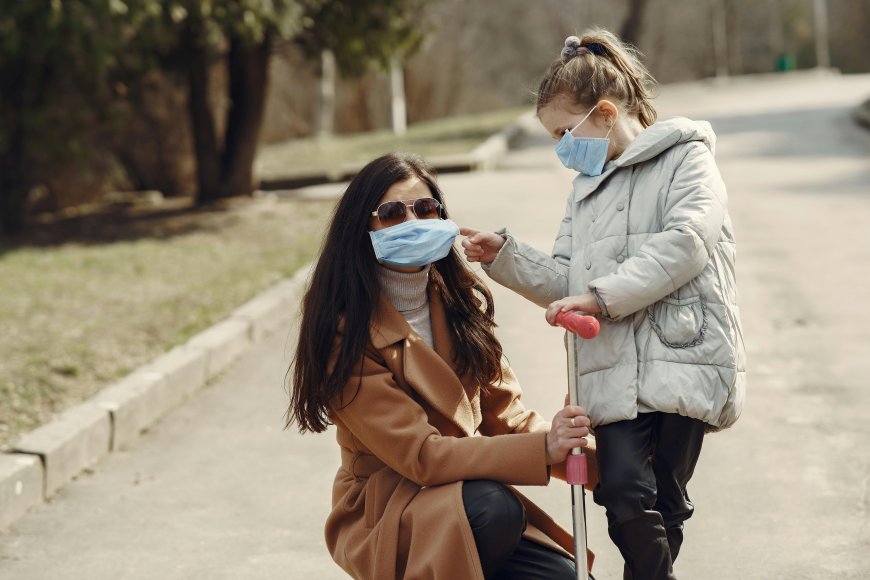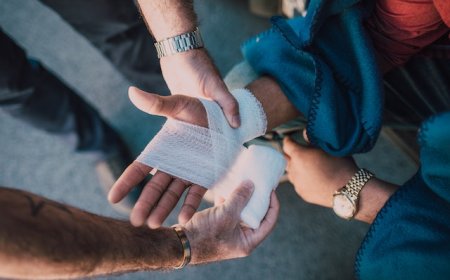Preparing for Extreme Weather: Tips for Staying Safe and Healthy
Extreme weather events, from heatwaves and severe storms to blizzards and flooding, can pose significant risks to health and safety. Proper preparation is crucial to minimize these risks and ensure you and your family stay safe. In this guide, we'll cover essential tips for preparing for extreme weather, focusing on staying safe and healthy.

1. Stay Informed
a. Monitor Weather Reports: Keep up-to-date with local weather forecasts through reliable sources like the National Weather Service or weather apps. Early warnings can help you prepare for impending weather conditions.
b. Sign Up for Alerts: Enroll in emergency alerts from local authorities and weather services. Many communities offer text or email alerts for severe weather warnings and emergency updates.
2. Prepare Your Home
a. Create an Emergency Kit: Assemble an emergency kit containing essential items such as:
- Non-perishable food and water (enough for at least three days)
- Battery-powered or hand-crank radio
- Flashlight and extra batteries
- First-aid kit
- Prescription medications and medical supplies
- Personal hygiene items
- Important documents (e.g., ID, insurance papers)
b. Secure Your Home:
- For Heatwaves: Install window coverings to block out heat and use fans to keep air circulating. Consider installing air conditioning if feasible.
- For Cold Weather: Insulate pipes to prevent freezing and ensure your heating system is in good working order. Keep extra blankets and warm clothing available.
- For Storms and Floods: Clear gutters and downspouts to prevent water damage. Elevate electrical appliances and important documents to reduce flood risk.
3. Plan for Health and Safety
a. Heatwaves:
- Stay Hydrated: Drink plenty of water and avoid alcohol and caffeine, which can lead to dehydration.
- Limit Outdoor Activities: Stay indoors during the hottest parts of the day. If you must go outside, wear lightweight, loose-fitting clothing and use sunscreen.
- Monitor Health: Watch for signs of heat-related illnesses such as heat exhaustion or heat stroke. Seek medical attention if you experience symptoms like dizziness, nausea, or confusion.
b. Cold Weather:
- Dress Warmly: Wear multiple layers of clothing, including thermal wear, hats, gloves, and scarves. Avoid prolonged exposure to cold temperatures.
- Stay Dry: Moisture can increase the risk of hypothermia. Choose waterproof clothing and footwear.
- Prepare for Power Outages: Have alternative heat sources like a fireplace or space heater, and ensure you have a backup power source if necessary.
c. Storms and Floods:
- Have an Evacuation Plan: Know your evacuation routes and have a plan for pets. Practice evacuating with your family to ensure everyone is familiar with the process.
- Stay Indoors During Severe Weather: Avoid going outside during storms and high winds. Stay away from windows and seek shelter in a safe location.
- Avoid Flooded Areas: Do not walk or drive through flooded areas. Water may be deeper and stronger than it appears. Use alternate routes if necessary.
4. Protect Your Health
a. Vaccinations and Medications:
- Update Vaccinations: Ensure that your vaccinations are up-to-date, especially if you live in an area prone to disease outbreaks related to extreme weather.
- Stock Up on Medications: Have an adequate supply of prescription medications and over-the-counter health supplies.
b. Mental Health:
- Prepare for Stress: Extreme weather can be stressful and anxiety-inducing. Practice relaxation techniques such as deep breathing, meditation, or yoga.
- Stay Connected: Keep in touch with family and friends to share information and support each other during challenging times.
5. After the Weather Event
a. Assess and Report Damage:
- Check Your Home: Inspect your property for any damage and report it to your insurance company if necessary.
- Avoid Hazardous Areas: Stay away from downed power lines, damaged structures, and other dangerous areas until they have been cleared by professionals.
b. Follow Recovery Guidelines:
- Stay Informed: Continue to follow local news and official updates for recovery information and resources.
- Seek Help: If you need assistance, contact local emergency services or disaster relief organizations.
Conclusion
Preparing for extreme weather involves more than just stocking up on supplies; it requires planning, awareness, and proactive measures to ensure your safety and well-being. By staying informed, preparing your home, planning for health and safety, protecting your health, and knowing what to do after an event, you can effectively mitigate the risks associated with extreme weather and safeguard yourself and your loved ones.
What's Your Reaction?





















































































